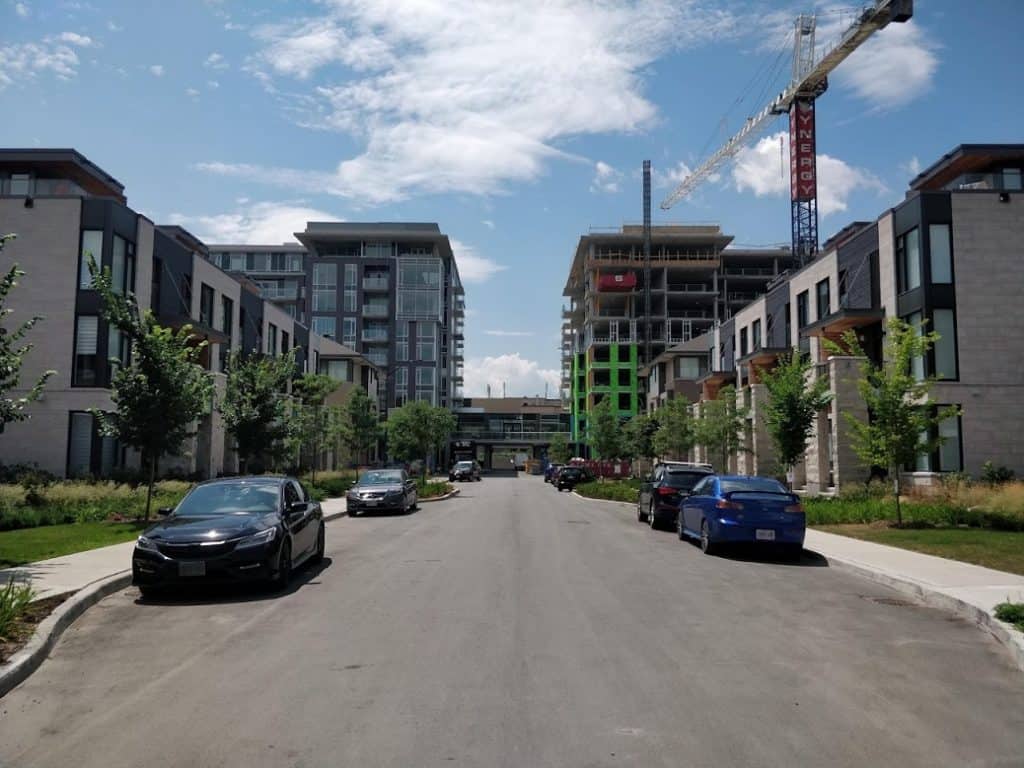In an era where housing affordability and availability have become pressing concerns, Canada has introduced a novel approach to address these issues: the Underused Housing Tax (UHT). This groundbreaking policy aims to tackle the challenge of empty homes and underutilized properties across the nation, particularly in urban areas where housing demand is high. The UHT is not just a tax; it is a strategic move to reshape the housing market, encouraging the efficient use of properties and potentially impacting housing prices and availability.

At its core, the UHT targets properties that are not regularly occupied by the owner or a tenant, levying a tax to discourage underuse. This initiative reflects a growing trend among global cities to optimize housing usage and ensure that available properties serve the housing needs of residents rather than sitting idle. Understanding the nuances of the UHT is crucial for property owners, investors, and anyone interested in the Canadian real estate market. This article aims to demystify the UHT, outlining its key features, impacts, compliance procedures, and its potential future implications on Canada’s housing landscape.
Introduction to the Underused Housing Tax (UHT) in Canada
The Canadian real estate market has witnessed a significant policy shift with the introduction of the Underused Housing Tax (UHT). This tax, implemented as part of Canada’s broader strategy to tackle housing affordability and availability, targets underused and unoccupied residential properties across the nation.
What is UHT?
The UHT is a federal tax imposed on non-resident, non-Canadian owners of residential properties that are considered underused or vacant. The tax is designed to encourage the optimal use of housing, ensuring that properties contribute to the housing supply rather than remaining empty. This approach is particularly relevant in urban areas where the demand for housing often outstrips supply.

Policy Rationale
The rationale behind the UHT is multifaceted. Primarily, it seeks to increase the availability of homes for rent or purchase, particularly in cities with high housing demand. By discouraging the practice of holding vacant properties as investment assets, the UHT aims to reduce speculative activities in the real estate market that contribute to inflated property prices.
Scope and Implementation
The UHT applies to residential properties across Canada, with a few exemptions. Properties are exempt if they are the primary residence of the owner, if the owner is a Canadian citizen or permanent resident, or if the property is rented out for a minimum number of days in a year. The tax rate is set at 1% of the property’s assessed value, with penalties for non-compliance or inaccurate reporting.
Early Observations
Since its implementation, the UHT has led to a noticeable shift in the housing market. Some non-resident owners have started renting out their previously vacant properties, while others have chosen to sell. This has had a knock-on effect, with an increase in the availability of rental properties in some urban centers and a slight moderation in property price growth.
Future Implications
Looking ahead, the UHT could have far-reaching implications for Canada’s housing market. It could potentially lead to a more stable and sustainable real estate sector, with a greater focus on housing as a necessity rather than a commodity. However, its long-term impact on housing affordability and the overall economy remains to be seen.
Key Features and Regulations of the UHT
The Underused Housing Tax (UHT) in Canada is a landmark policy with several key features and regulations designed to address the issue of housing underutilization. Understanding these elements is crucial for property owners, investors, and anyone engaged in the Canadian real estate market.
Definition of Underused Housing

At the heart of the UHT is the definition of what constitutes underused housing. A property is considered underused if it is not the primary residence of the owner and is not occupied by a tenant for a significant portion of the year. The exact criteria for occupancy and exemptions are clearly outlined in the policy, with specific guidelines for different types of properties and ownership scenarios.
Tax Rate and Calculation
The UHT imposes a tax rate of 1% of the property’s assessed value. This assessment is based on the fair market value of the property as determined by the relevant Canadian property assessment authority. The tax is applied annually, and property owners are required to file a declaration regarding the status of their property.
Exemptions and Relief
There are several exemptions to the UHT, intended to ensure fairness and address practical considerations. These exemptions include properties that are the primary residence of the owner, properties owned by Canadian citizens or permanent residents, and properties that are rented out for a minimum number of days in a year. There are also provisions for temporary relief under certain circumstances, such as renovations or legal disputes.

Compliance and Enforcement
Compliance with the UHT is mandatory, and the Canadian government has put in place robust mechanisms for enforcement. Property owners are required to file an annual declaration, and failure to comply can result in substantial fines and penalties. The government also employs various methods to verify the accuracy of declarations, including audits and cross-referencing with other data sources.
Implications for International Owners
The UHT has specific implications for non-resident, non-Canadian owners of residential properties in Canada. These owners are the primary target of the tax and must navigate the regulations carefully to ensure compliance. The policy aims to discourage speculative investment in the housing market by international investors, aligning with broader efforts to prioritize housing availability for Canadian residents.
Impact of UHT on Homeowners and the Housing Market
The introduction of the Underused Housing Tax (UHT) in Canada marks a significant shift in the housing landscape. This policy has far-reaching implications, not only for property owners but also for the broader housing market.
Effect on Property Owners
For property owners, particularly those who do not reside in Canada, the UHT presents new considerations. Homeowners who hold properties primarily as investments or second homes now face additional costs if these properties remain unoccupied. This has prompted a reevaluation of property holding strategies, with some owners opting to sell or rent out their properties to avoid the tax. For Canadian residents, the impact is less direct but still significant, as it influences the overall dynamics of the housing market in which they operate.

Influence on Rental Market
One of the immediate effects of the UHT has been an increase in the availability of rental properties, especially in urban areas. Owners seeking to avoid the tax have been incentivized to put their previously unoccupied properties on the rental market. This influx of rental units has the potential to moderate rental prices and increase options for tenants, contributing to a more balanced rental market.
Impact on Housing Prices
The UHT also has implications for housing prices. By discouraging speculative holding of properties and increasing the supply of available homes, the UHT could contribute to stabilizing or even reducing property prices in some markets. However, the extent of this impact varies across different regions and is influenced by numerous factors, including overall economic conditions and local housing demand.
Broader Economic Implications
Beyond its direct effects on homeowners and the rental market, the UHT also has broader economic implications. By targeting speculative investment in real estate, the policy aims to redirect investment into more productive economic sectors. Additionally, by improving the availability and affordability of housing, the UHT can contribute to greater economic stability and social equity.
Long-Term Effects
The long-term effects of the UHT on Canada’s housing market are still unfolding. While the policy aims to create a more equitable and efficient housing market, its full impact will depend on a range of factors, including the responsiveness of property owners, changes in market dynamics, and potential adjustments to the policy itself.
How to Comply with UHT Regulations: A Step-by-Step Guide
Navigating the compliance requirements of Canada’s Underused Housing Tax (UHT) can be challenging, especially for non-resident property owners. This guide aims to simplify the process, providing a clear step-by-step approach to ensure compliance.

Step 1: Determine Eligibility
The first step is to determine whether your property falls under the UHT regulations. Assess if the property is considered underused based on the criteria set by the Canadian government. This includes evaluating the occupancy status of the property and your residency status as the owner.
Step 2: Understand Exemptions
Familiarize yourself with the exemptions that apply to the UHT. If your property is your primary residence, or if you’re a Canadian citizen or permanent resident, you may be exempt. Similarly, properties that are rented out for a significant part of the year might also qualify for an exemption.
Step 3: Calculate the Tax
If your property is subject to the UHT, calculate the tax based on 1% of the property’s assessed value. This calculation should be based on the most recent assessment provided by the relevant Canadian property assessment authority.
Step 4: File the Declaration
Property owners are required to file an annual UHT declaration with the Canada Revenue Agency (CRA). Ensure that your declaration is accurate and submitted before the deadline. The declaration should include details about the property, its use, and any applicable exemptions.
Step 5: Pay the Tax
If your property is liable for the UHT, ensure that you pay the tax by the specified deadline. Late payments can result in penalties and interest charges. Payment can typically be made through various channels, including online banking, wire transfers, or by mailing a cheque to the CRA.

Step 6: Keep Records
Maintain thorough records of your property’s use, any rental agreements, and communications with tenants. These records are crucial for substantiating your declaration and can be vital in case of an audit or review by the CRA.
Step 7: Stay Informed
Keep yourself informed about any changes or updates to the UHT regulations. The Canadian government may revise policies, exemptions, or procedures, and staying updated will help ensure ongoing compliance.
Future Prospects: What UHT Means for Canada’s Housing Landscape
The Underused Housing Tax (UHT) represents a significant policy intervention in Canada’s housing market, with implications that extend far into the future. Understanding these future prospects is key to comprehending the full impact of the UHT.
Shifting Housing Market Dynamics
The UHT is set to alter the dynamics of the housing market significantly. By discouraging the underuse of properties, the policy aims to increase the availability of housing, particularly in urban areas. This could lead to a more dynamic and responsive housing market, where supply more closely aligns with demand.
Potential for Increased Affordability
One of the primary goals of the UHT is to improve housing affordability. By increasing the supply of available homes and reducing speculative property holding, the policy could help moderate housing prices over the long term. This increased affordability could be particularly beneficial for first-time homebuyers and lower-income families.

Impact on Investment Trends
The UHT may also influence investment trends within the real estate sector. Investors might reconsider the viability of holding vacant properties in Canada, potentially leading to a redistribution of investment towards other sectors or more active forms of property development and management.
Challenges and Adjustments
As with any major policy, the UHT is likely to face challenges and require adjustments. The government will need to monitor the policy’s impact closely and be prepared to make changes to address any unintended consequences or to enhance its effectiveness.
Long-Term Vision for Sustainable Housing
Ultimately, the UHT aligns with a broader vision for sustainable and equitable housing in Canada. By ensuring that housing serves its primary purpose as a place to live, rather than a speculative asset, the UHT contributes to a more stable and sustainable housing market. This approach not only benefits individual homeowners and renters but also supports the overall health of the Canadian economy.
The introduction of the Underused Housing Tax (UHT) in Canada marks a pivotal step towards addressing the complex challenges of housing affordability and utilization. As we have explored throughout this article, the UHT is a multifaceted policy with far-reaching implications for homeowners, the real estate market, and the broader Canadian economy.
By targeting underused properties and encouraging their active use, the UHT aims to make more efficient use of Canada’s housing stock, potentially easing the strain on housing availability in high-demand areas. For homeowners, particularly non-residents, the UHT necessitates a strategic reevaluation of property holding and management practices. For the housing market as a whole, this policy could lead to a more balanced and sustainable landscape, where housing serves as a home first and an investment second.
The UHT’s long-term success will depend on its implementation, the responsiveness of property owners, and the government’s ability to adapt the policy to changing market conditions. As with any significant policy intervention, continuous monitoring, evaluation, and adjustment will be key.
In conclusion, the UHT represents a bold step by the Canadian government to reshape the housing market. It’s a policy that reflects a growing recognition of housing as a fundamental right and a crucial component of a healthy, equitable society. As Canada navigates the nuances of the UHT, it sets an example for other nations grappling with similar housing challenges, highlighting the importance of innovative, targeted policies in the realm of real estate and urban development.
